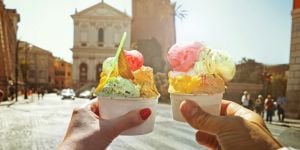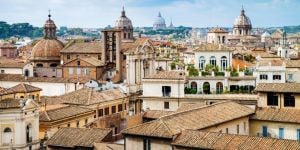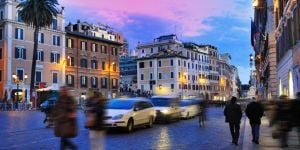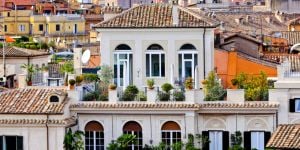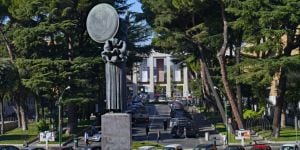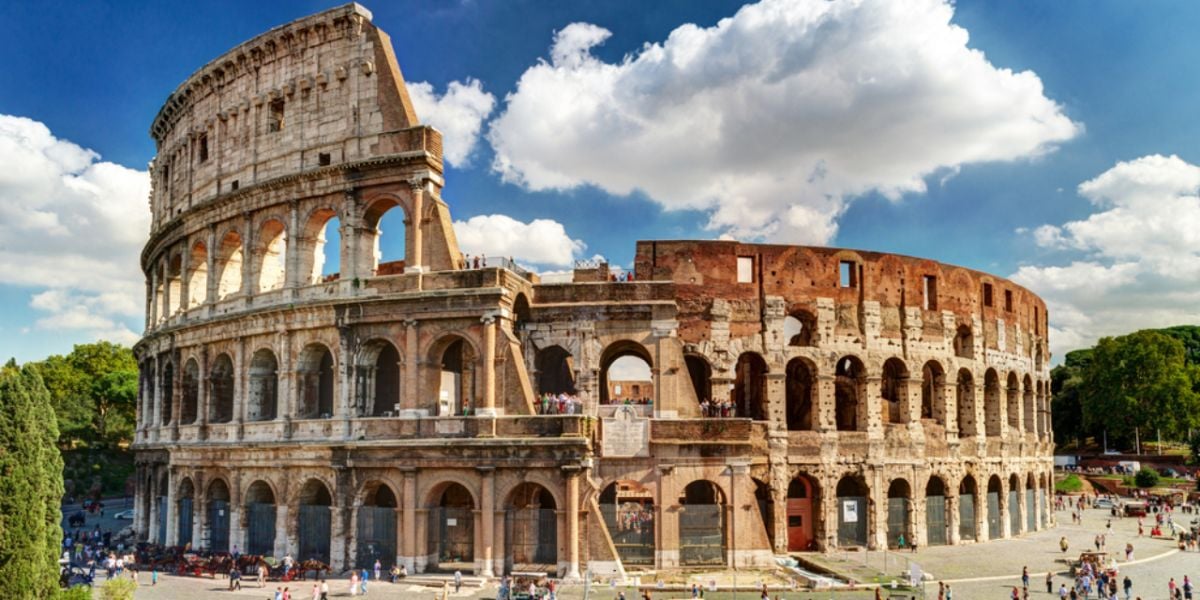
Rome, the "Eternal City", is an open-air museum, a whirlpool of antiquity and modernity, a place of conviviality and evenings spent with family and friends eating good food and having an aperitif. Rome is a beautiful mishmash of classical ruins, baroque palaces, world-famous museums, Renaissance fountains, trattorie, piazze, and shops. There is so much to do for everyone in this bustling capital that it can make you dizzy.
Good to know:
The Rome Tourist Office is a great resource to start your stay in Rome, whether to visit or to learn more about the area.
Museums and archaeological sites in Rome
Rome is an open-air museum, and if you don't want to pay to enter a museum, just wander the streets of the historic center, and you'll be amazed. The bridges, fountains and 900 churches alone will quench your thirst for culture as you explore the city.
However, we recommend that you take advantage of the magnificent museums in the city. The attention and care in the conservation of cultural goods and heritage are significant in Rome and, more widely, in Italy.
Below are some of the most important museums in the historic center of Rome, including:
- Capitoline Museums
- Vatican Museums
- Borghese Gallery
- Ara Pacis Museum
- Parco Archeologico del Colosseo (Colosseum, Imperial Forum and Palatine)
- Palazzo Barberini (Galleria Nazionale di Arte Antica)
- Palazzo Massimo (Museo Nazionale Romano)
- Castel Sant'Angelo
For contemporary art lovers, don't miss:
- National Gallery of Modern and Contemporary Art (GNAM)
- National Museum of XXI Century Arts (MAXXI)
Others are less well known but worth visiting, such as the Museo delle Mura, the Oriental Art Museum, or the Planetarium and its astronomy museum.
Rome being the cradle of Roman Antiquity, it is, of course, easy to visit the vestiges of the past such as the Colosseum and the Roman Forums, the most famous, but also the Baths of Caracalla, the park of the Appia Antica, where the catacombs of Saint Calixtus and Saint Sebastian are also located. You can also admire the site of Largo Argentina, the place where Julius Caesar is said to have been murdered, but also home to the cats of Rome.
Good to know:
The Municipality of Rome has introduced a 12-month pass (MIC Card) for anyone who is a resident, has a registered domicile, or is a student in Rome. It gives unlimited access to the 18 museums and 25 archaeological sites belonging to the municipality. For more information, you can visit the Musei in Comune Roma website.
Cafés and bars in Rome
Cafés are an integral part of Italian culture; they are called bars. Most Italians enter a bar for a quick coffee standing at the counter, so you will rarely find anyone sitting quietly reading the newspaper, except for the elderly. For a truly authentic experience in Rome, do as the Romans do and sip your espresso or cappuccino at the bar.
Rome is dotted with squares, large and small, the piazze, which have long served as the hub of community activity. Today in Rome, and more widely in Italy, it is still common to wander aimlessly, to do the passeggiata, and to meet in piazza. Most of the squares are lined with bars and cafés, restaurants and nice shops. Rome also has many pubs, birrerie (breweries) serving beer and snacks such as hamburgers, and secret bars called Speakeasy.
Music in Rome
Rome has many venues dedicated to live music, from rock to jazz to classical. Alexanderplatz, in Vatican City, is a popular jazz club that holds summer concerts in the gardens of Villa Celimontana. There is also the Casa del Jazz near the Baths of Caracalla. Blues, rock and indie music can be heard at Teatro India, Monk, Largo Venue, Atlantico, or Live Alcazar. The PalaLottomatica and the Auditorium Parco della Musica host major musical and sporting events.
In summer, especially in June and July, the city comes alive with musical events throughout the capital, including the Baths of Caracalla, Villa Ada, Ippodromo delle Cappannelle, Auditorium Parco della Musica and Piazza del Popolo.
If you are looking for a complete calendar of concerts and other events in Rome, Zero is a useful website.
Nightclubs in Rome
Rome has a vibrant, late-night nightlife. Locals usually gather for dinner around 9 pm, then head out into the nightlife. Campo de Fiori, Pantheon, San Lorenzo, Pigneto and Testaccio are hubs for nightclubs.
Things to have around Rome
The Romans built sumptuous baths and villas across Lazio, as evidenced by the magnificent Villa Adriana, Villa Gregoriana and Villa D'Este. Rome is also less than half an hour from the sea, and the whole stretch of coastline offers beautiful beaches such as Anzio, Gaeta, Sabaudia, San Felice Circeo, Sperlonga and the islands of Ponza and Ventotene.
You don't have to go far to enjoy beautiful lakes. Try Bracciano, an enchanting body of water dominated by a magnificent 16th-century castle, or Lake Bolsena, Europe's largest volcanic lake. If you prefer the mountains, head for the ski resorts of Campo Felice, Monte Terminillo, Monte Livata and Campo Staffi.
Weekday activities in Rome
Apart from museums and archaeological sites, Rome is full of activities to do on your own or with others on weekdays. There are cinemas, gyms, tennis courts, parks for walking and running, and swimming pools.
During the week, you can see shows, such as ballets or operas at the Opera House of Rome and plays in the theatres in the capital.
You can also take language courses at one of the many schools in the capital or cooking classes.
In the nightlife areas of the historic center, Monti, Pigneto, San Lorenzo, Piazza Bologna, you will find bars and restaurants open on weekdays too. Italians like to meet after work or school, especially when the weather is fine, in the main squares of these areas to have a beer, a glass of wine, or the famous Spritz with friends or to do the Aperitivo. This happy hour formula allows you to eat buffet-style with a drink.
Weekend activities in Rome
On weekends, take a walk in the parks of the capital, such as the Aqueduct Park and the regional park of Via Appia Antica; take advantage of the good weather to have a picnic, for example. Alternatively, spend a day visiting the site of Ostia Antica, an ancient port accessible by train in half an hour from the Piramide station.
Of course, theatres, the Rome Opera House, cinemas, bars and restaurants are all open during the weekend in Rome.
If you like shopping, you will be satisfied with the many shopping centers and streets, such as Via del Corso, Via Cola di Rienzo, or Via Tuscolana. Many markets and flea markets open at weekends, some of them on Sundays, like the Mercatino di Borghetto Flamino or the Mercato Monti Urban Market. You can find all the clothing, flea and food markets on the Mercati di Roma website. Experience the food markets in Rome and buy fresh fruit and vegetables; it's worth the trip for the spectacle and freshness of the produce!
Children and animal lovers will particularly enjoy Rome's zoo, Fondazione Bioparco, located in the Villa Borghese. Here you can see around 200 species from all five continents. There is also the Children's Museum near Piazza del Popolo, which offers educational workshops, exhibitions and other events for the little ones.
Good to know:
Every first Sunday of the month, all the museums in the capital offer free access, except for temporary exhibitions. You can find the complete list on the Turismo Roma website.
Useful links:
We do our best to provide accurate and up to date information. However, if you have noticed any inaccuracies in this article, please let us know in the comments section below.
